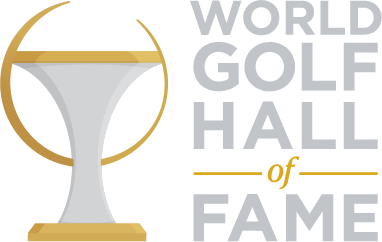By Travis Puterbaugh, Curator
In April 1986, Jack Nicklaus shocked the world when he won his sixth Masters title and at the age of 46 became the oldest winner ever of the Green Jacket. Little could anyone expect that the next Major to be contested, the U.S. Open, would feature yet another career-defining performance from another elder statesmen on the PGA TOUR.
Raymond Floyd, who turned professional the same year as Nicklaus (1961), had 19 wins on TOUR to his credit across three decades, including THE PLAYERS Championship in 1981 and three Major Championships: The Masters in 1976, and a pair of PGA Championships in 1969 and 1982. Success in his own national championship had eluded him, however, as he only recorded two Top-10 finishes in 21 outings, and none since 1971.
Prior to the 1986 U.S. Open at Shinnecock Hills, Floyd, who was 43 at the time, recalled loathing even playing in U.S. Opens due to the way the courses were set up by the USGA, which he said placed an emphasis on narrowed fairways and thick, deep rough around the fairways and greens.
Shinnecock Hills – a links-like seasonal golf course which opened in 1891 on the eastern tip of Long Island – had been the site of the U.S. Open in 1896, but not much else in the ensuing 90 years. Accordingly, few players had ever even set foot on the course by the time tournament week rolled around in June.
“I remember playing Shinnecock the Monday before the tournament,” Floyd said. “I had never seen the golf course before and came home with the biggest grin on my face. I told my wife, Maria, ‘this is finally going to be a great Open. They could not trick it up. It is out there in its natural state, and there is nothing they can do about it.”
Mother Nature played a hand in “tricking up” the course on Thursday, as adverse conditions featuring 30 mph wind and cold rain turned this historic course of small greens and bountiful bunkers into a hellscape for the world’s best golfers, who struggled to even sniff par.
Then-USGA President Bill Williams even joked, “Welcome to the first playing of the British Open in the United States.”
Only one golfer, Bob Tway, matched even par at 70, while the average scores hovered around 75, including the opening round turned in by Floyd. Undeterred by this score or his two double-bogeys, Floyd instead credits the rough outing and literally weathering the storm with helping him win the tournament.
“I played terrible, had no feel,” Floyd said, “but somehow I survived.”
Conditions improved considerably on Friday, and Greg Norman emerged from the pack with a 68 and a three-stroke lead. His weekend would be remembered as much for a verbal encounter with a rowdy fan on the back nine as for his collapse on Sunday, but heading into the final round, Norman held a one-stroke lead over Tway and Lee Trevino. Floyd, who had put in a solid round of 68 and 70 following his 75, lurked in the weeds at two-over for the week but just three strokes behind.
At one point during the helter-skelter round of leaderboard jockeying on Sunday, nine golfers had a share of the lead at one-over par – including Hall of Famers Ben Crenshaw, Greg Norman, Payne Stewart, Lee Trevino and Lanny Wadkins – but Floyd hung around and climbed, taking advantage of his opportunities on the back nine while others fell by the wayside.
“When you get down to the final nine holes of a U.S. Open,” Floyd said, “everybody starts making bogeys.”
Except, perhaps, for Floyd who dialed up a steady stream of well-timed birdies and pars with an iron-clinic to help facilitate birdie opportunities. After a birdie on the par-3 11th hole, he narrowly avoided giving it back with a bogey on the 12th but saved par with a clutch 20-footer. He would add birdies on the 13th to reach even par and grab his first share of the lead, and then on the 16th with a 10-foot putt to start pulling away from the pack. A bogey-free round helped produce a back-nine score of 32 and an impressive final round of 66, good enough for a two-stroke victory.
Lanny Wadkins, who had shot a blistering final round 65 ahead of Floyd, did his friend Floyd a favor by giving him the score to beat.
“There’s no questions about it,” Floyd said. “Lanny showed me what I had to do from the 12th hole on.”
After his opening round 75, Floyd played Shinnecock, tied a U.S. Open record by playing his final 54 holes in 204 shots, and with a final score of 279, left Long Island as the only golfer with a final score under par for the tournament.
At the time of his victory, Floyd became the oldest player to win a U.S. Open in what Dan Jenkins referred to as “the year of the old-timer.” Although the mark has since been eclipsed by fellow Hall of Famer Hale Irwin, who won at the age of 45 in 1990, nothing can diminish Floyd’s achievement at Shinnecock in 1986 or what it meant to his legacy in golf as a winner of three different Majors and a four-time Major Champion.
“The U.S. Open had always been one of my goals,” Floyd said. “I don’t think my career would have been complete without winning the Open.”
